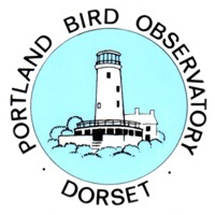Weekly round-up: 7 - 13 May 2014
Much of this week had a vaguely April weather feel about it rather than a “second week of May” weather vibe as cool breezes, showers and occasional spells of sunshine provided a veritable mixed bag of conditions ~ winds through the Channel and along the western coasts were almost autumnal in feel as they swept through the area across the weekend.
As the review period drew to a close, a cooling (largely) northerly airflow brought with it a ever-increasing high pressure system with it and birders on the south coast in particular were girding loins and more as the weather looks likely to favour them more than anyone else in the days that lie ahead.
However, as is so often the case these days (at almost anytime of the year) the big action this week lay in Shetland and the top three birds this week were, once again, all to be had across this remarkable archipelago.
1975.
39 long years ago.
A year where Harold Wilson and his pipe were at the helm of the Labour government. A year when West Ham’s Alan Taylor bagged a Wembley brace to secure the FA Cup. A year when Neil Young released not one but two nailed-on, stonewall classics (“Tonight’s The Night” and “Zuma” just in case you want to check them out). A year when I was in Miss Wonnacott’s Class 6 at primary school and rare birds meant nothing other than the pure delight brought to me by seeing Bullfinches in our garden."Judd and I found Britain's 12th-ever Swainson's in September 1990 - at a place just a few hundred metres from where he found the Hermit Thrush yesterday. Even more ironic is that he told the story to the group about the Swainson's and how we found just moments before he found the bloody Hermit." Hugh Harrop / Shetland Wildlife
But there were those who were fully aware of what was what in the World of Rares and on June 2nd 1975 Stephen Rumsey and Harold Nash located Britain’s first-ever Hermit Thrush at Field, on Fair Isle, a bird subsequently seen later that day by the legendary Richard Richardson, along with warden Roger Broad and long-time lister Tom Francis.
A second spring Hermit Thrush was found on April 30th 1998 on Fetlar (which unlike the first one, stayed a second day) and now we have a third.
With a weary inevitability, the Mega Alert heralded yet another great, great bird for Shetland during the late afternoon of 13th ~ Fair Isle had bagged a second spring Hermit Thrush becoming the third for the island as a whole (another was found there on October 19th 1995).
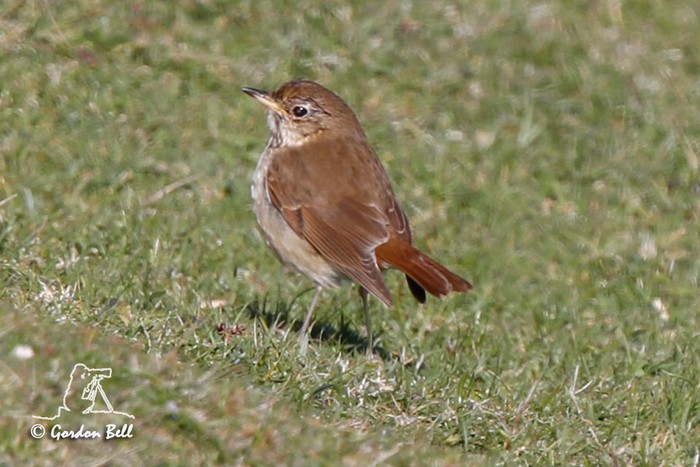
.jpg)
.jpg)
This will become the 12th record for Britain and follows on swiftly from the very popular, heavily twitched bird at Porthgwarra last October. Shetland has now edged ahead of Scilly in terms of records ~ “4 – 3 to the Northern Isle, 4 – 3 to the Northern Isle” with two each for Cork (in the Octobers of 1998 and 2006) amd the Outer Hebrides (seen within 24 hours of each other, on Barra and South Uist, in October 2010). Then none until that mainland first last autumn and the tally rises again thanks to this week’s late, late Shetland Wildlife find ~ a bird of the hishest quality.
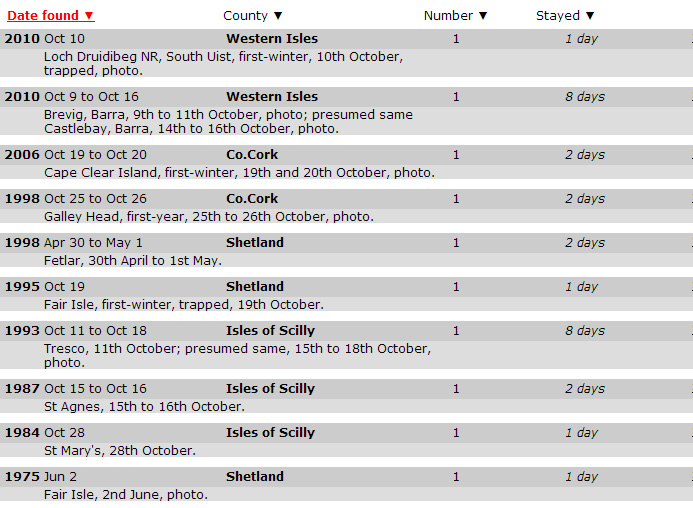
All this Catharus carry-on meant that it was Tweaksville-time at the top of the review and it managed to usurp another Nearctic goodie from the top spot. Without further ado, we’ll pick up from where we were before all that Fair Isle malarkey disrupted my evening!
Undoubtedly one of the real stars of last week’s news was the discovery of a female-type Myrtle Warbler on Orkney’s North Ronaldsay on May 6th. It didn’t come as too much of a surprise the next day when negative news came forth from the Orcadian island but there was (for some at least) no end of a surprise when news broke on 7th of the discovery of a Myrtle Warbler on Shetland, way up on Unst.
As soon as images of this superb discovery were plopped online, it was clear that this was actually a superb rediscovery ~ the bird from Orkney had (as you’d expect) carried on a northward trajectory but the fact that it decided to appear in front of a birder on one of the more remote Shetland islands was pretty darn neat.
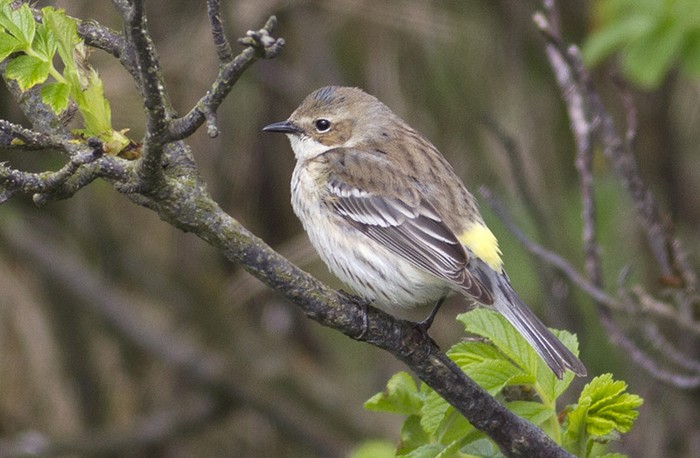
Imagine it, all those places it could have hidden itself away around Shetland, all those barely looked at nooks and crannies it could have stopped off in and never, ever been seen. But this Myrtle Warbler had other ideas and decided that the pool at Haroldswick was the spot it wanted to seek more respite from its south to north journey on the wrong side of the Atlantic and here it stayed through the afternoon of 7th, being last seen on the morning of 8th.
Quite where it goes now will really be a mystery but if there’s a record of this typically perky little wood-warbler somewhere through Norway or somewhere else in northern Scandinavia (if it turned sharp right) or maybe Faeroes or even Iceland (if it turned hard left) in the next few days (unlikely I know but hey, who’d have popped a bob or two on the thing being relocated in the first place?) then there’s every chance we know where it came from.
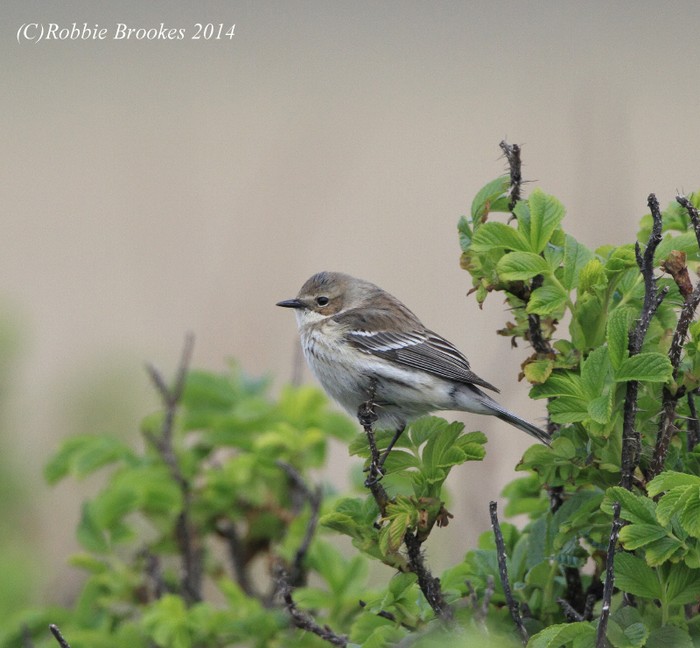
This now becomes the third record of the species for Shetland and the first away from Fair Isle ~ the first, a spring male was found near the South Light on May 18th 1977, while the second, a first-summer male, spent three days on the island in early June 1999.
Myrtle On The Move
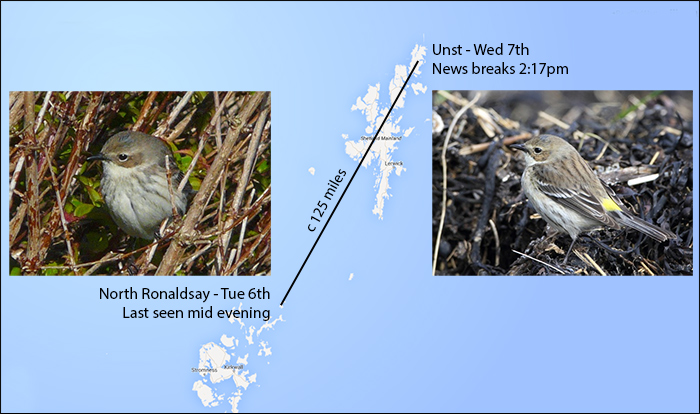
As to whether this could even be the very same bird that spent a good part of the early days of 2014 in County Durham seems more fanciful still (it actually doesn’t look like it…), so let’s chalk a second one up for the year and let Unst chalk up the third top notch American passerine on the island in the past six or seven months...

Moving quickly back to Fair Isle where we’ll give a nod of the head and a tip of the hat to the still present ludicrously handsome male Caspian Stonechat that seemed to have found the area around Lower Leogh (no, you can’t ask about the Fallen Madonna with the Big Boobies or do a daft Franglais accent whilst dressed as a policeman, however funny it maybe…) very much to his liking, present all week to 13th.
With a fortnight on the clock and no hint of moving just yet, you have to wonder whether it may do something daft like stay there for the summer. An early shout for sure, but you never know.
…and it is great news that he’s still on station as it gives us a chance to admire this delicious portrait from Chris Bromley. Wowsa….what a ripper….
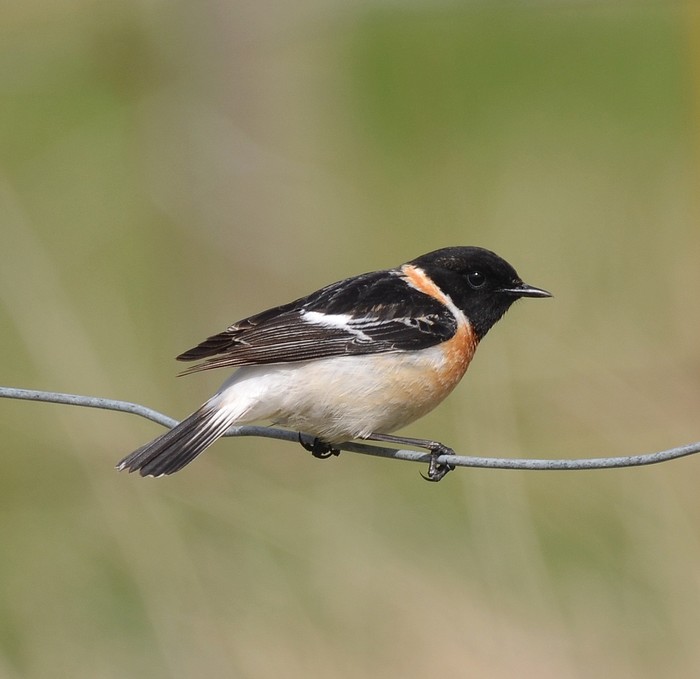
Well, it seems as though my erstwhile colleague from the Northern Isles went a tad early in calling that we were unlikely to get close to equally the quartet of Great Spotted Cuckoo records last week ~ no sooner had the metaphorical ink dried and the last RBA review had turned to a mere sheet of cyberspace chip-paper then along came news of 2014’s fourth record of this always appealing cracker ~ this one seen near the church in Barna (Co. Galway) on 10th.
Still a massive rare in Ireland, the bird (if accepted) will become just the second record for Galway, the only other record came 172 years ago, in March 1842 on Omey Island and that bird is one of just seven accepted records to date from the whole of the country, the most recent of which was the early, early bird in Cork, at Ringaskiddy in February 2009. That was one of the years picked out by Jon last week as a four-in-a-year Great Spotted Cuckoo year, along with 1990. We can now add 2014 to that list.
Passing through the column marked “ooooh, nice” last week was the news of a morning-only singing male Western Bonelli’s Warbler at Newbiggin-on-Sea (Northumberland), present for just a few hours during 3rd.
There were those who’s interested was piqued not only through the date of the bird’s arrival (spring Bonelli’s, of either flavour, are certainly to be taken note of…) but also due to the assorted waifs and strays of a certain “easterly” bent along the northern sector of the east coast (the bunting, the stonechat, the assorted albistriata Subalps…) and, on seeing a few of the first photos, there was a certain vibe emanating from them that also seemed to suggest that perhaps we were actually on for the much rarer option of the two species.
By 7th, the debate was opened and despite initial assertions that it was definitely a Western (primarily because of the song), the crucial analysis of the sound recordings taken at the time made certain that the bird was in an Eastern Bonelli’s Warbler, just the sixth for Britain and the third spring record in to the bargain.
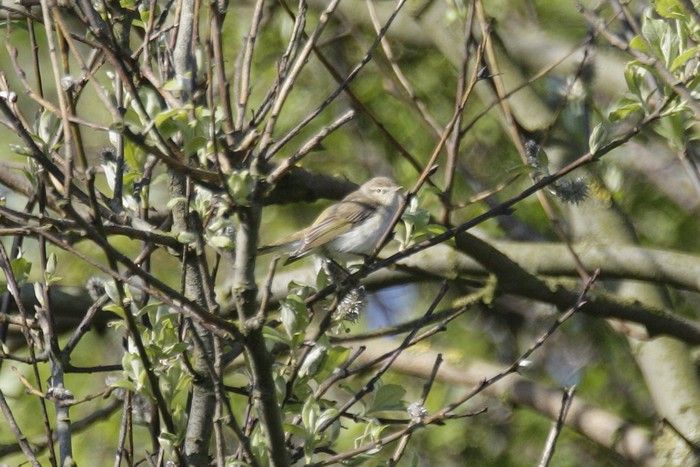
That means that the last three records of Eastern Bonelli’s have now come along in spring ~ on Lundy on April 26th 2004 and on Portland on May 1st 2009 and now at Newbiggin on May 3rd 2014 (that’s a fairly narrow window and one to definitely consider should you stumble across a Bonelli’s between April 26th and May 3rd anytime soon).
Prior to these, we have records from Shetland at the end of August 1998, again in Northumberland in September 1995 with the first coming on Scilly in September and October 1987 (often seen around the tress at Salakee).

Left to right: Lundy, 26 Apr 2004 (© Richard Campey), Portland 01 May 2009 (© Martin Cade), Newbiggin 03 May 2014 (© Stefan McElwee)
There are, to date, just four accepted records of Western Bonelli’s Warbler in April, remarkably three of those came of 9th ~ at Beachy Head in 1972, on Lundy in 1976 and Holme in 1988 ~ with a fourth turning up on St. Agnes (Scilly) on April 30th 2000 (spending almost a week there). May shows 11 accepted records of Westerns, spread across the month while there is one accepted record of Bonelli’s Warbler sp., in April with 13 May ones.
News of a White-billed Diver heading past Pendennis Point (Cornwall) on the morning of 8th was certainly a surprise, but was actually the third spring record for the county (although the first in May ~ the others coming off Marazion for 17 days in April 1967 while a second was seen in April 1998 along the Cornish south coast, in Carlyon Bay, tho’ it may have been a wintering bird from earlier that year. Either way, this week’s bird is a great record and must have been a pleasing surprise for the observers.
Less surprising but still pretty damn great were the birds logged at Burray (Orkney) and Cullen (Moray) on 7th, near Banff (Aberdeenshire) on 8th and, in full breeding chequer-board pomp and splendour, a summer-dressed bird from the ferry in Bluemill Sound on Shetland on 10th.
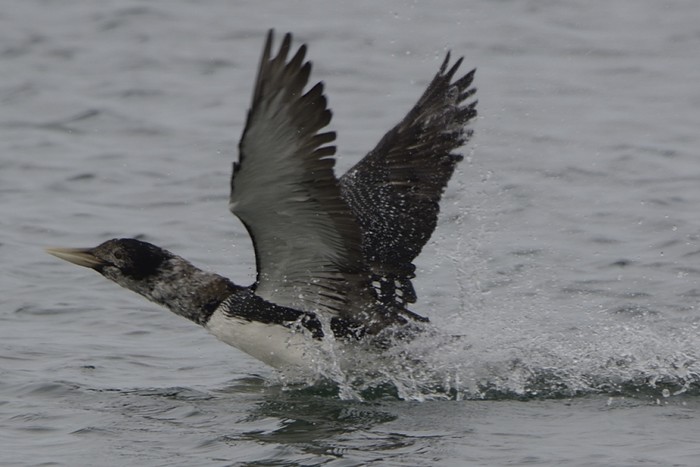
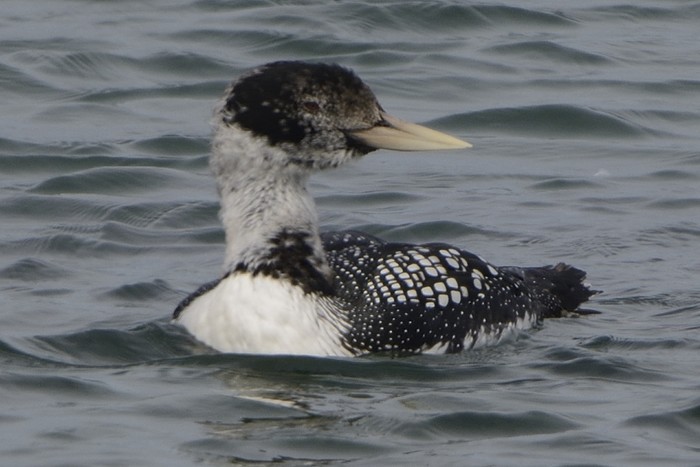
Four single Long-tailed Skuas were logged as the weekend approached ~ off Morfa Bychan (Gwynedd) and Milford-on-Sea (Hampshire) on 9th and on 10th off Bowness-on-Solway (Cumbria) and back off the Gwynedd coast, at Criccieth. Ayrshire pulled one in on 11th, passing Saltcoats in the early morning and on 12th, after a single adult drifted through Port Talbot (Glamorgan), 10 birds passed Bowness-on-Solway (Cumbria).
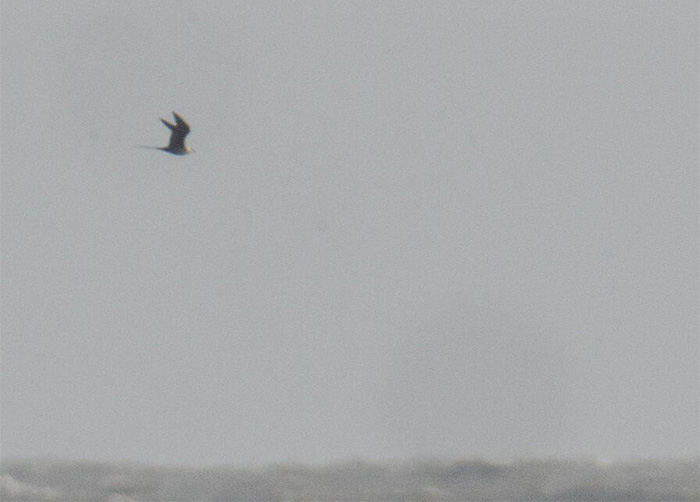
The stormy conditions along the western seaboard of the country pushed a number of Pomarine Skuas our way ~ 179 recorded by the middle of 12th with double figure counts coming from Aird an Runair, North Uist on 7th (15 there), Powillimount (Dumfries & Galloway) on 9th (16 for them) and Brownstown Head (Co. Waterford) on 10th (12 counted through the morning). That 16 in D&G accounted for almost half of those recorded in the county this week, while there were 24 in all for the Outer Hebrides and also Cumbria, 22 for Dorset, and 17 for both Gloucestershire and Somerset.
The only other seabird species of note was Balearic Shearwater with singles noted from Portland Bill and Porthgwarra on 11th.
The week saw a Purple Heron descend on St. Martin’s (Scilly) from 9th-11th and a second was reported from Bowling Green Marsh RSPB (Devon) on 13th.
Across on the Cornish mainland, a Glossy Ibis was still at Gillan Creek to 10th (and two were also seen coming “in-off” on the Lizard on 11th), while in Dorset, two first-summer birds remained around the Coward’s Marsh area of Christchurch Harbour to 11th ~ these two then accounting for the birds at Titchfield Haven (Hampshire) on 13th.
Further along the south coast to Lidsey (West Sussex) where another duo remained to 9th while single in the region were seen at Climping (West Sussex) on 7th and Port Meadow (Oxfordshire) on 10th (appearing at Otmoor RSPB on 13th). In the Midlands, a roaming Glossy Ibis appeared at Rutland Water (Leicestershire) on 7th where it remained to 12th while to the east, one lingered at Hickling Broad NWT (Norfolk) to 17th.
Moving north to Nottinghamshire where after weeks away, a Glossy Ibis was noted again at Lowdham (and Hoveringham) on 13th while in South Yorkshire last week’s loner was present at Edderthorpe Flash from 8th-13th (shifting briefly to Wombwell Ings and elsewhere in the Dearne Valley throughout the week). Orkney’s Glossy Ibis was on North Ronaldsay to 11th and Shetland welcomed one on south Mainland, over Spiggie and Virkie on 8th. Over in the west and on to Wales where one became two at the National Wetlands Centre (Carmarthenshire) on 11th-12th while Ireland scored just the one this week, still at Lough Cowey (Co. Down), also on 11th.
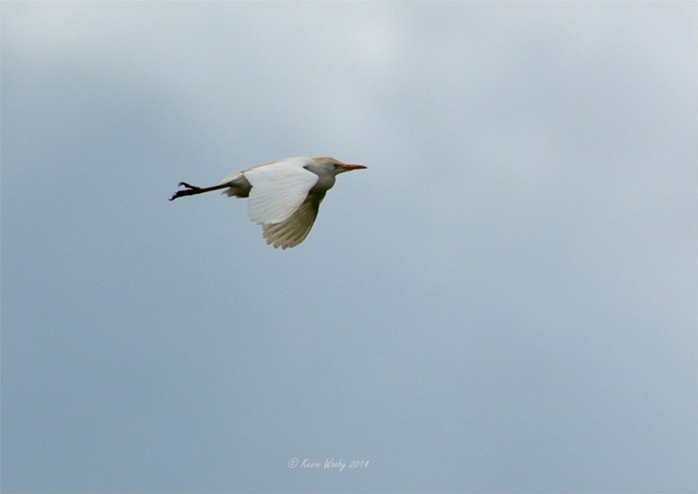
Down in to Wexford and to Tacumshin where the two Cattle Egrets stuck it out to 11th at least, with singles in England remaining at Wall Common (Somerset), the Ouse Washes (Cambridgeshire) and Steeple Claydon (Buckinghamshire) to 9th (appearing at Little Marlow on 12th) with a new arrival appearing at Frampton-on-Severn (Gloucestershire) on 10th.
The meagre Great White Egret tally of just nine birds began with one reported heading over Cley beach car park on 7th and was followed by further birds at Lake Vyrwny (Powys) and a double again on the Ouse Washes on the same date, with the Powys bird noted over Welshpool on 8th. Also on 8th came a record from Carlton Marshes NR (Suffolk) and the following day saw another noted in flight over Gibraltar Point (Lincolnshire) with one on 10th seen at Attenborough Pits and Holme Pierrepoint (Nottinghamshire). Making a nice padder for anyone paying their respects to the Gillan Glossy Ibis was a Great White Egret at the same site on 11th while just one was reported from the Somerset Levels this week.
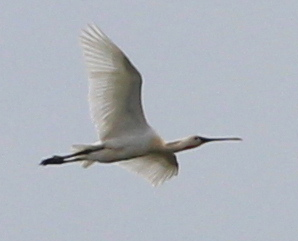
A total of 30+ Spoonbills in 14 counties countrywide were this week’s spatulate-beaked scores-on-the-doors, with three at Suffolk’s Minsmere RSPB on 9th and three in the channel at Middlebere (Dorset) on 11th being the pick of the bunch. Three singles were logged over the border in Norfolk (and two were together at Salthouse on 13th), and there were two a piece for North Yorkshire, Kent and West Sussex. Notable too was an inland bird at Little Marlow GPs in Buckinghamshire on 13th.
The bottom seems to have fallen out of the Common Crane market this week as the assorted buglers of curious origins presumably settled down on their reedy nest-mounds in various parts of the country. The only ones noted were four over Walberswick and two at Lakenheath RSPB (Suffolk), all on 7th and at Breznett (Kent) and Paddy’s Dubh, Lough Beg (Co. Derry) on 11th.
The flight of four White Storks over the east end of Norfolk’s Breydon Water on 7th would have been a thing of deep joy pretty much anywhere else around the county ~ but the annual scourge of free-flying birds at Thrigby Hall (where they are breeding too) has muddied the waters in east Norfolk for years, and there’s no hint that anything will change quick-smart either. Much more to the purists’ liking would have been the bird found on the Lizard, at Croft Pascoe Pool on 10th with another seen the same day in Northamptonshire, at Maidwell and then Brixworth.
The singing Spotted Crake continued to make itself heard in the Oxfordshire countryside, still in fine form at Kennington to 8th. You had to go further a field to find more, one was heard on Iona (Argyll & Bute) on 7th with another appearing at Douglas (Clyde) on 11th.
It felt a little bit like a very cheap shout in a whisky bar where our feathered honking and quacking chums were concerned as the week began ~ singles all round as the assorted rarer waterbirds of May clung on to their RBA credentials for just a wee while longer. But things did buck up a little...as they would do if you were in a whisky bar I guess...
A Black Brant was again at Levington Creek (Suffolk) on 10th and was our only goose of note.
In South Yorkshire, a young drake Lesser Scaup was R.F.P’ed on 9th having spent some time the previous day at Ingbirchworth Reservoir. The 7th saw single drake Ring-necked Ducks noted again on Shropshire’s White Mere with another appearing on Loch of Clickimin, on the edge of Lerwick town centre on Mainland Shetland, with the third of the week being noted on Derry’s Lough Beg on 11th.
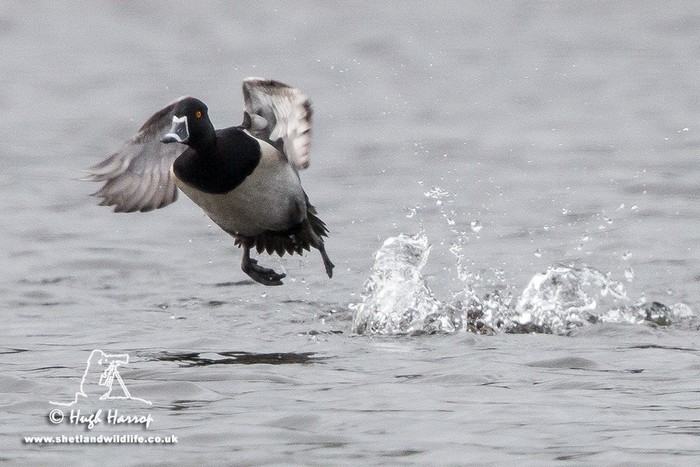
Across on Tiree, the drake American Wigeon stayed put on the assorted waters of the island to 13th and another drake emerged in Spey Bay (Moray) on 11th while another Scottish island was taking care of one of the last Green-winged Teals of spring, present at Howmore, South Uist (Outer Hebirdes) on 8th. The seoond of the week was at Castle Espie WWT (Co. Down) on 11th.
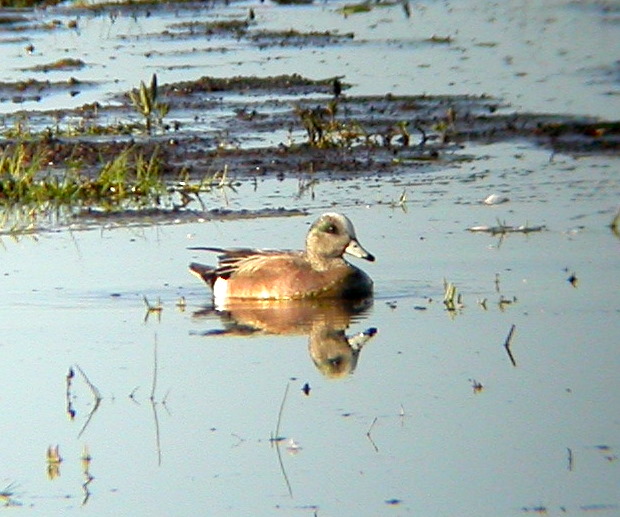
Still all-at-sea were the drake King Eider on the Ythan Estuary (Aberdeenshire) and the drake Surf Scoter at Musselburgh (Lothian), both in situ to 10th.
A good showing of waders across the country this week, with some expected and not-so-expected species in the mix. And where better to start than with a superb quintet of Americans?
The week began with a double hit of super-spotty Spotted Sandpiper through the spine of England ~ at Draycote Water (Warwickshire) and Farmoor Reservoir (Oxfordshire).
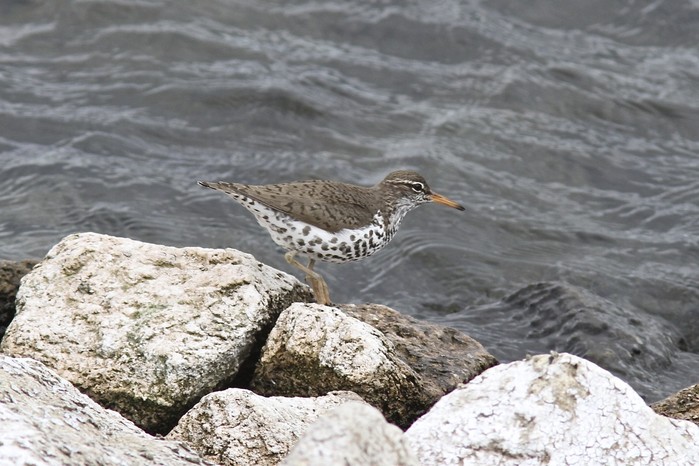
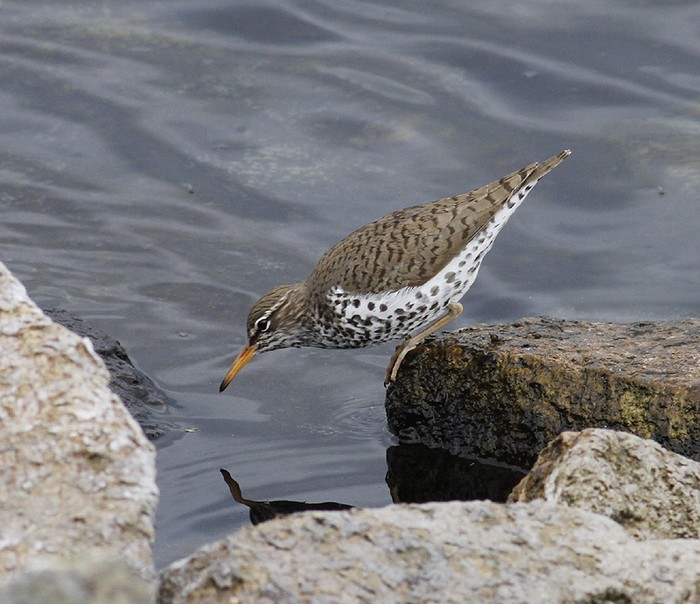
The former bird, a one-dayer, was the fifth for the county and the first since one at the same site in July 2007. Indeed Draycote has accounted for all of Warwickshire’s Spotted Sandpipers, the first coming in May 1977 with further birds in 1980 and 1990.
The latter bird in Oxfordshire disappeared for a couple of days before appearing again on 10th and showing on until 12th. Just as with Warwickshire, this species is a single-site species for Oxfordshire, the first and second records also both coming from Farmoor, in May 1989 and July 1990.
It was a great week for Lesser Yellowlegs ~ three birds found between 8th-11th. First up was one at Beadnell (Northumberland) from 8th-10th for what could become the 8th record for the county (and the third in May). Bird #2 was a nice find on the pools at Windmill Farm NR, on the Lizard on 10th (where it stayed to 13th) ~ Cornwall has 40+ records of this lovely Tringa to its name, but this is only the second record for May, following on from one in north Cornwall in 2010. Bird three was found on the Outer Hebrides, at Loch Fada on Benbecula on 11th, the 12th record for the islands, but the first spring one ~ all they need now is a Greater Yellowlegs to complete the hat-trick of colour-legged rare ‘shanks for the year….and one of those won’t be far away I’ll wager.
/lesser_legs_benbeculac.jpg)
Not only did Northumberland boast a Lesser Yellowlegs, it also held the week’s only Pectoral Sandpiper too, present at Hoppen Kiln Flash from 7th-10th.
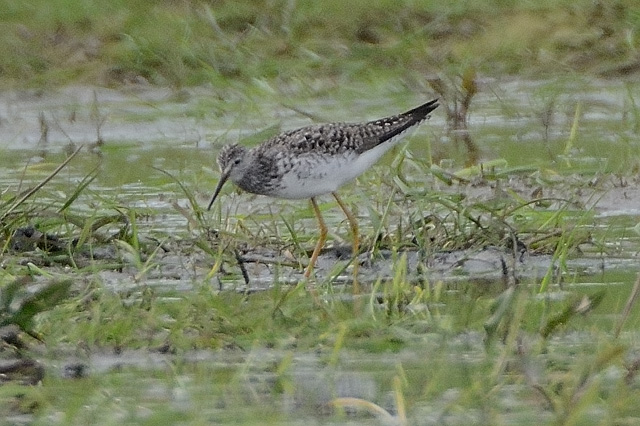
From a different point of the compass all together was the single Black-winged Stilt that stuck it out at Dungeness to 11th and the (up to) 14 Temminck’s Stints recorded over the last seven days.

There were up to seven in Norfolk and five for Suffolk ~ two for Cley Marshes NWT on 10th with two new ones reported there the following day (with three as the curtain dropped on the review on 13th), while singles were at Hickling Broad NWT on 7th and 10th with another at Titchwell RSPB on 11th while down the road came one at Trimley Marshes SWT on 7th with two there on 10th which, in turn, followed on from two at Benacre on 8th. The only birds away from East Anglia were at Lynemouth Flash (Northumberland) on 7th and Frampton Marsh RSPB (Lincolnshire) on 13th.
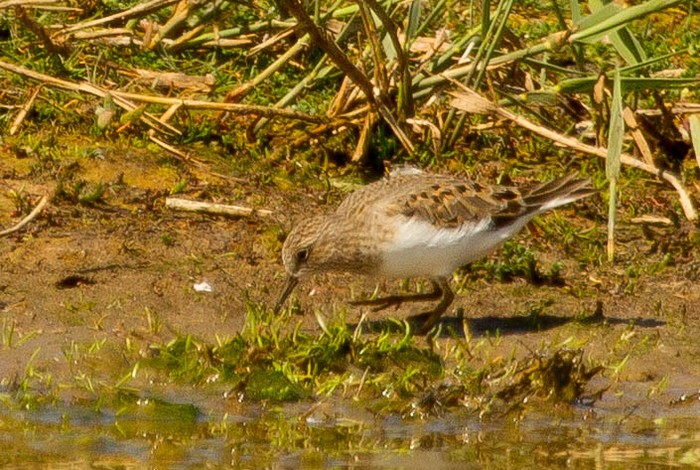
Lincolnshire was the main domain for the week’s Dotterels ~ some sizeable numbers recorded there up until the weekend. At least 23 were at North Cotes on 8th and followed 14 seen near Grainthorpe the previous day. The 8th also saw a flock of 20 head north over Donna Nook and 25 were at Tetney as well. The only other double figure trip was in the fields behind Choseley (Norfolk) 11 there on 8th-9th, with 10 still present on 11th.
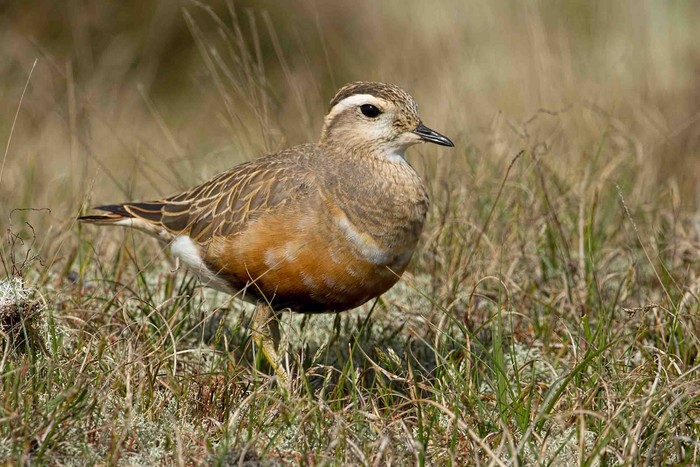
There were fours for Clyde’s Lowther Hill on 8th and Lancashire’s Pendle Hill from 7th-11th, while there were three each (a trip-lette?) for Guisborough (Cleveland) on 8th and Easton Broad (Suffolk) and in The Cheviots (Northumberland) on 11th while two remained at Winterton (Norfolk) to 8th when a female was seen at Hartside Pass (Cumbria). A lone bird was also foun on the top of Fair Isle, at Ward Hill on 11th with another far-flung bird appearing at Paiblesgarry, North Uist (Outer Hebrides) on the same day.
Wexford scored a Bonaparte’s Gull, an adult summer, at Tacumshin on 8th where it remained to 11th when, amazingly, it was joined by a second! Could one of these be the bird seen recently in Gloucestershire having just nipped across the Irish Sea? Or could one of them be a returning passage bird to the Wexford hot-spot, an adult spent over 10 days at Tacumshin in May last year (appearing on 2nd, departing after 13th).
The only previous twosomes of the species came from Cobh in County Cork in February 2004 and on Anglesey in May 1998.
We’re down to just two Ring-billed Gull now, with the second-summer again present on North Uist’s Loch Sandary to 8th with a first-summer reported at Balranald RSPB on 12th with another first-summer along Sandymount Strand (Co. Dublin) on 11th.
/ring_b_gull_may8c.jpg)
The Kumlien’s Gulls held firm at two remaining birds, still on Fair Isle (Shetland) to 8th and at Littlehampton (West Sussex) to 13th. Falling away once again (thank goodness…) were Iceland Gulls, dropping from 25 last week to 21 this week, with ten for Scotland (up to five on the Hebs, two each for Argyll & Bute and Dumfries & Galloway with one for Highland), six for England, two for Wales and three in Ireland. Glaucous Gulls also became scarcer still, 13 noted, with up to eight on the Outer Hebrides, three singles in Ireland (in Cork, Louth and Wexford) and another in Devon.
Some exciting, timely news came from the depths of north Wales on Sunday evening, where the first Gull-billed Tern of 2014 was noted three miles to the SSE of Tywyn, at Aberdyfi (Gwynedd) on 11th and then again at nearby Ynyslas Point on 12th ~ the second county record if accepted, it would follow on from one at Tywyn on May 19th 2004.
Rounding things off is the Cork Whiskered Tern which moved from Lough Aderra to Ballybutler Lough on 7th but wasn’t seen again after that until what was presumably the same bird popped up at Ballyhonock Lough on 11th where it remained to 13th.
A magnificent Snowy Owl was at Grenitote, North Uist on 10th-12th, in almost the exact same spot that an adult male appeared on almost the exact same date (present on May 13th-15th last year).
/snowy_oql_2014_mayc.jpg)
Rather less striking is Black Kite but finding a gen one is nothing to be sniffed at. On Scilly, one was still around Tresco on 7th with two over New Grimsby the following day (these may well be the first “double” since two at Icklesham in West Sussex on May 11th 1998). The only other report this week came from Kent where a Black Kite was seen at Nonington and then Langdon Cliffs NT on 11th.
In Scotland’s Lammermuir Hills, last week’s Rough-legged Buzzard remained to 7th, although the superb dark morph Montagu’s Harrier had already moved on.
Six passage Monts were reported through this week ~ a male was mentioned as heading west over Hickling (Norfolk) on 7th, a ringtail was at Pakefield (Suffolk) on 9th, a male was at Shenstone (Worcestershire) on 10th while the second ringtail of the week passed through Spurn on 11th with the third noted at Rodmell (East Sussex) on the same day. In Suffolk, on 12th, a male Montagu’s Harrier was seen heading across Pipps Ford and the county’s third of the week, another ringtail, was seen at Carlton Marshes.
Finally, five Honey Buzzards were reported through the week, seen over Martlesham Heath (Suffolk) on 9th, reported over Weymouth (Dorset) on 10th and at Caister-on-Sea (Norfolk), Huntingdon (Cambridgeshire) and Mudeford Quay (Dorset) on 13th.
Sadly the dictionary-bustin’, spell-check mangling, Scrabble-score bunting on Fair Isle did the expected bunk last week, but we can at least go into full on bunting-bonanza mode this week with a cracking quartet of Emberizas…
Kicking things off was the fine male Ortolan that spent a day on the golf course on St. Mary’s (Scilly) on 7th and this was followed by a Shetland double-act on 9th ~ a Little Bunting appearing on Fair Isle with a Rustic Bunting following on at Funzie, Fetlar later the same day. Shetland’s second Little Bunting popped up on the mainland, at Hillwell on 12th.

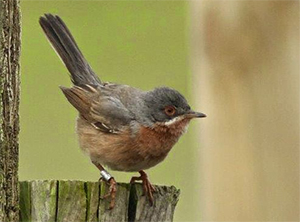
Fair Isle also copped for a new Eastern Subalpine Warbler on 8th while last week’s Western Subalpine Warbler was also still on the island for a handy comparison of the two forms. A third Shetland Sub-A, another male Western gave birders at Haroldswick on Unst something else to go at once they’d had their fill of the Myrtle Warbler, present in gardens near the pool there on 7th. The fourth of the week was a brief female on Ramsey Island (Pembrokeshire) on 8th ~ the first on the island since a singing male there in June 2009.
Nipping over the Irish Sea and around the corner and up a bit to Dursey Island where the third Sardinian Warbler for Cork and Ireland lingered in Scott’s Garden until 11th at least, racking up an unusual lengthy stay of 22 days. Mopping up Warbler World, we’ll jump through from genus to genus and bring you news of the singing male Great Reed Warbler that was found at Slimbridge WWT (Gloucestershire) on 13th ~ just the third county and the first since one spent a month at Frampton in May and June 1981.
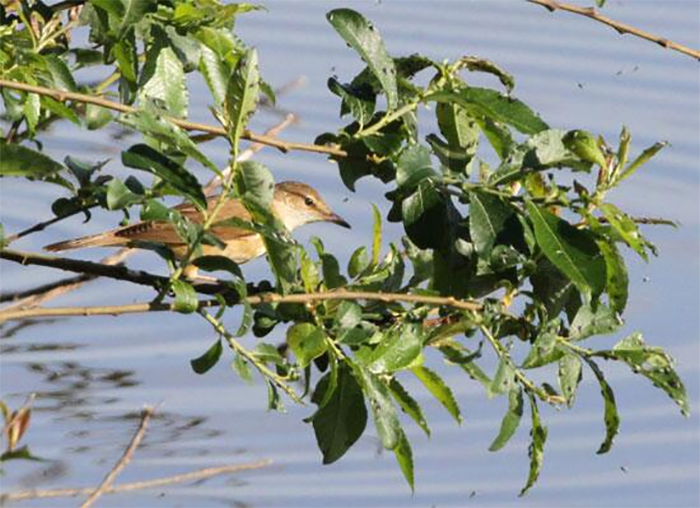
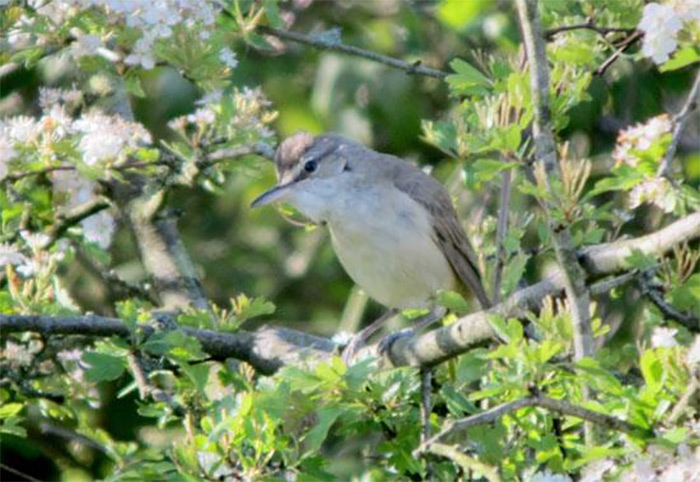
A flyover Roller is a tough one to place correctly in the rarity round-up running order ~ a fantastically exciting experience for those to have had the good judgement to be in the field to capture that right-time, right-place thing but, at the end of the day, it’s a goner if never seen again. Either way, news of a northbound psychedelic corker over Kent’s Worth Marsh on the morning of 12th was one to perk up the bleary-eyed birder, especially if they were county listers ~ there may have been 11 accepted birds to date, but there hasn’t been one anywhere through the Garden of England since a one-day bird on Thanet in June 1992. Before that, it was a one-day Roller in the autumn of 1980, before that June 1969. That’s a seriously good county bird…
Spring Citrine Wagtails are a particular favourite of mine ~ finding three within the Cley Square in the last five years or so helps the cause of course :o) ~ and this week saw the third of the year (and the third for May) make a brief stopover (less than 30 seconds…that’s properly brief) in the Bird Observatory garden at Portland but it stuck around long enough for Martin Cade to rattle off a shot or two to capture the exciting moment of a Portland first for posterity.


This striking first-summer female was only the fourth for Dorset, the first were two birds at Stanpit in October 1966 and a recent male at Lodmoor for a day in May 2009. (A record from Abbotsbury last August is yet to be accepted).
Until the end of 2012, there was a grand total of 307 records on the books for this super species but of those seven have been found in April (and six of those have come since 2004 and excludes an already-accepted bird for Cley and Kelling from April 2013). Indeed Norfolk has hosted four April Citrine Wagtails while May has seen 27 birds found nationwide, 16 of those since 2001 ~ which again emphasises the shift up in gears for the species in the past 13 years.
The second Red-throated Pipit of 2014 was reported heading over Berry Head (Devon) on 11th while the only Richard’s Pipit was noted at Horsey (Norfolk) on 9th. The week’s two single Short-toed Larks couldn’t have been further apart if they tried, one lingered on the airfield on St. Mary’s (Scilly), the other was residing on Malcolm’s Head, Fair Isle (Shetland) and both were present to 11th. The latter of the two famous birding locations was also playing host to the week’s only Red-spotted Bluethroats males found at Furse on 9th and the Walli Burn on 13th.
A male Woodchat Shrike was a great find at Aldcliffe Marshes (Lancashire) on 8th and is the fifth May record for the county in the last seven years. A second appeared on St. Martin’s (Scilly) on 12th and it was still present the following morning too. With a fair wind we should start (hopefully) to pick up a few more Red-backed Shrikes as prime time for these popular drifters draws closer. For the moment, we’ll content ourselves with news of two singles on Unst, at Norwick on 8th and Haroldswick on 9th and a male on St. Martin’s (Scilly) until 9th.
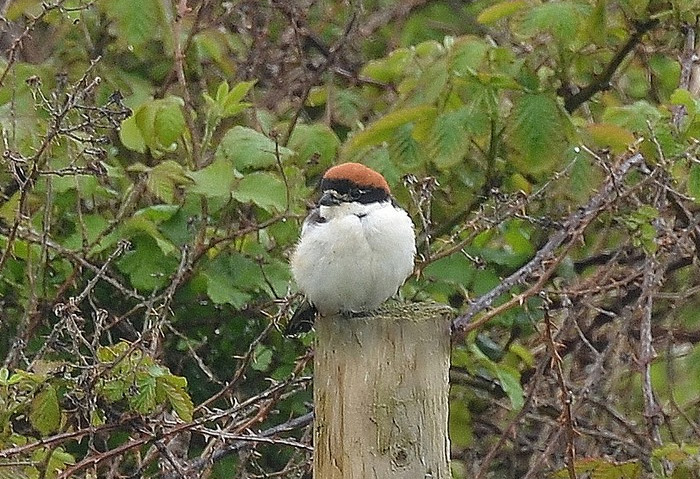
The absolute lack of Alpine Swifts has been one of the minor mysteries of the spring so far but this week saw the duck broken as the first of the year was reported from Ouse Fen RSPB (Cambridgeshire) on 10th.
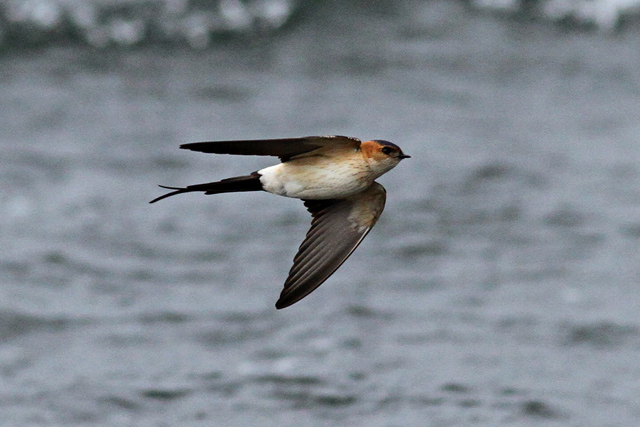
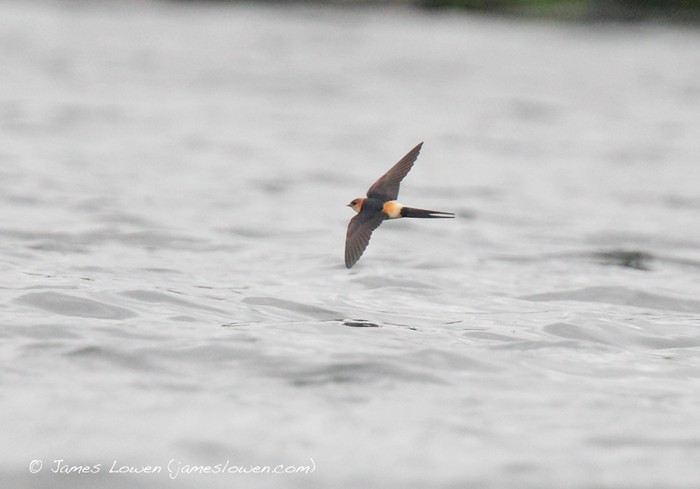
By contrast, it has been a very tidy few weeks for Red-rumped Swallows and this week a further nine were added to the tally ~ on 7th one or two birds passed through Gibraltar Point (Lincolnshire) and two were also noted on the Ceredigion/Pembrokeshire border by the Teifi Estuary. Singles on 8th were seen in Kent (at Pegwell Bay) and East Sussex (at Rye Harbour NR), while the 9th saw a singleton logged at Easton Braod (Suffolk). London birders had their chance on 11th with the discovery of a Red-rumped Swallow at Thamesmead, spending three hours on site before departing. The final bird of the week was noted over Reculver (Kent) on 13th.
Keeping things southern and colourful, we’ll head in to Golden Orioles with three birds noted, all of them in southwestern England. Two of those were on Scilly, one on St. Martin’s on 7th, the other on St. Mary’s on 10th while the mainland offered a report of one on the Lizard (Cornwall) on 11th.
It wasn’t the strongest showing for Hoopoes after several double figure weeks, it was down to just six reports ~ at the start of the week singles were at Beaminster (Dorset) and St. Agnes (Scilly) and were present to 9th and 13th respectively. The wintering bird at Leswalt, near Stranraer (Dumfries & Galloway) was reported again on 8th when another was claimed at Kirkby Grindalythe (East Yorkshire). Staying in the same county, there was little doubting which Hoopoe was the focus of a lot of people’s attention, especially those with any type of a lens, present near Beverley from 9th-11th and giving all comers ample chance to chance their arm at classic Upupa action shots. The beastie obliged too. The final one of the week appeared in gardens at Skaw, Whalsay (Shetland) on 12th.
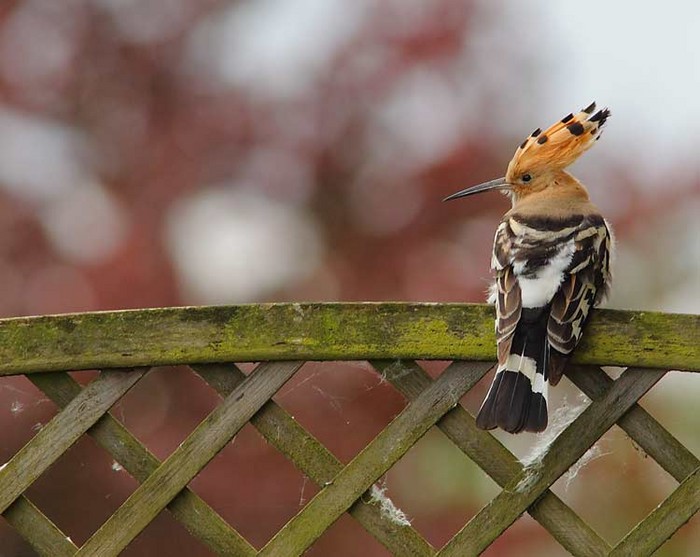
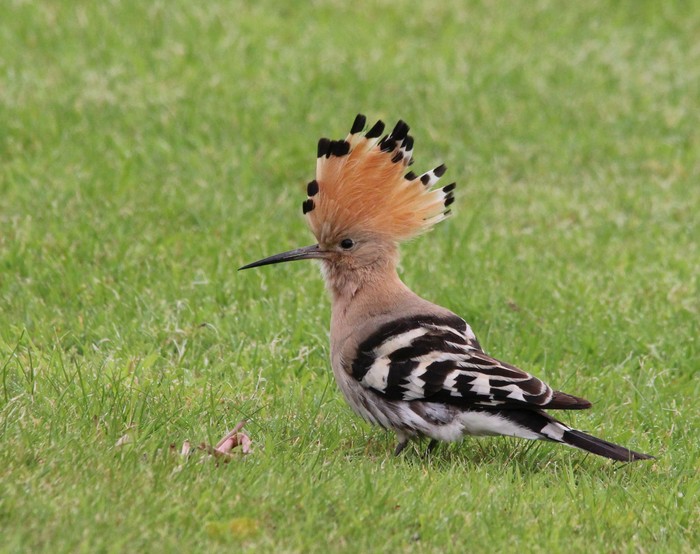
Hoopoe-HD 720p from dave tucker on Vimeo.
Shetland held up to four of the week’s half dozen Wrynecks with singles seen at Levenwick on Mainland and on Fair Isle on 8th while it, or another, was seen the following day. Another was found on Unst, at Baltasound on 11th. On Orkney, a Wryneck was found on Rousay on 8th while a mainland bird appeared at Ketteringham (Norfolk) on 9th.
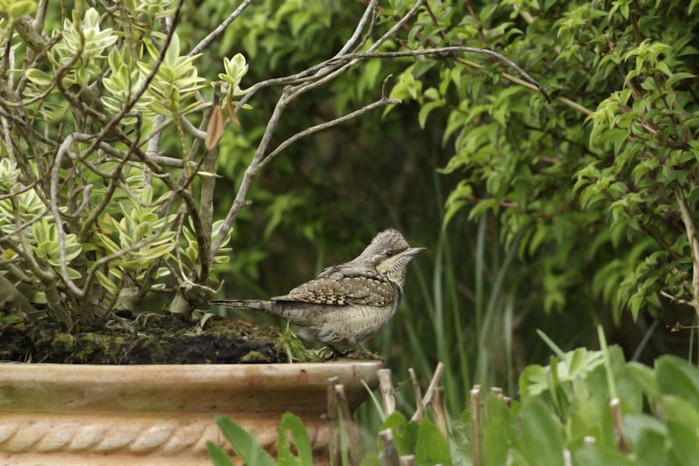
Only one Serin was seen over the past seven days, but it was a popular and often showy one for all that ~ a female spending time each day popping in to the feeding station at Gibraltar Point NNR (Lincolnshire) from 7th-13th.
Finally, hanging on in to another week (but only just) were the two Two-barred Crossbills at Broomhead Reservoir (South Yorkshire) and also at Lynford Aboretum (Norfolk) ~ present and correct to 7th and 8th respectively. If we’re going to get some historic British-bred juveniles, they should be appearing any day…wouldn’t that be just the coolest thing?
A warming high pressure system looks set to build across pretty much the whole country as the weekend approaches ~ temperatures on the rise and blue skies a go go ~ so it should prove inviting for more Red-foots (if the winds stick to the southeast) and perhaps species as diverse as White-winged Black Tern, Bee-eater and Woodchat Shrike could see their migratory vectors towards us eased considerably (with the south coasts of England and Ireland favourites to land some good birds ~ it may be just too darn sunny on the east side as birds power straight overhead.
We’re due a Thrush Nightingale or perhaps even a Black-headed Bunting to keep the eclectic 2014 mix looking lively, but this is mid-May and as delightful as those drifters from the south and southeast maybe, most will eyes on potentially bigger prizes.
May 14th 2000 heralded the arrival of a four-day female Blue Rock Thrush (the third of four spring birds) while May 15th 1982 popped in Britain’s first-ever Marmora’s Warbler in South Yorkshire (four of the six accepted records have been in May). The 16th has a monstrous role-call of rares, Shetland offering up Common Yellowthroat in 1997 and Thick-billed Warbler in 2003 while our last Wallcreeper fluttered and flopped its way to St. Catherine’s Point on the Isle of Wight…
Rock Thrush has made two appearances on 17th along with an Eastern Olivaceous Warbler in Dorset, while a male Spanish Sparrow in Wales on May 18th 1993 is the pick of the varied bunch for that particular date.
Three more Rock Thrush records and the famous Pagham Trumpeter Finch of 1984 make May 19th particularly interesting while a spring Brown Shrike and a Fan-tailed Warbler in Dorset have made 20th all the more appealing.
…and we really mustn’t forget the potential (as touched on and nailed a couple of weeks ago) of a vagrant from the Nearctic either…the week ahead has produced 18 individuals of nine different species ~ and with the likes of White-crowned Sparrow, Lark Sparrow and Northern Mockingbird featuring on that list…well, let’s not rule anything out…
(…and it looks like I spoke to soon where all of that was concerned…but at least it was slap-bang in the right ballpark…)
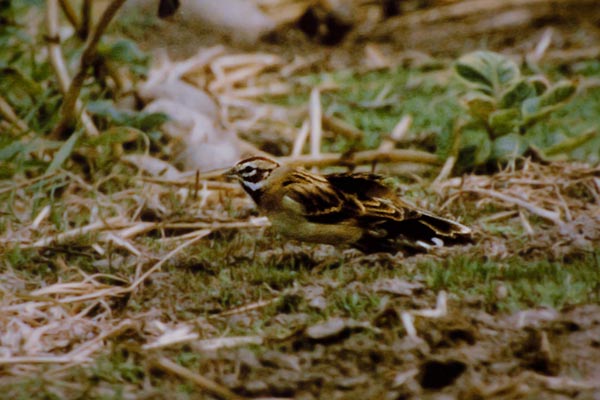
Mark Golley
14 May 2014
Special thanks this week to Hugh Harrop, Gordon Bell and Shetland Wildlife for the Hermit Thrush image. And also many thanks to Martin Cade and the Portland Bird Observatory for the Citrine Wagtail shots and for allowing us to use the Eastern Bonelli’s Warbler shots and sound file.
Contributors websites















